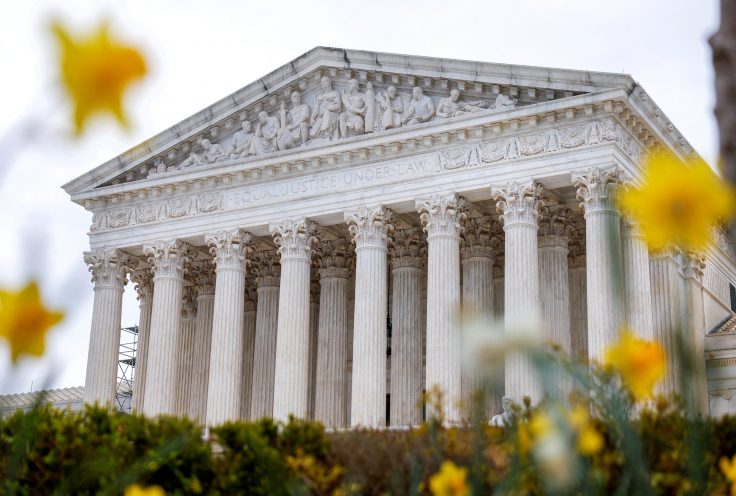The Supreme Court on Thursday handed a victory to South Carolina Republicans, ruling against a challenge to an electoral map they devised that moved 30,000 black residents out of a congressional district.
The justices reversed a lower court's ruling that the Republican-drawn map violated the rights of black voters under the U.S. Constitution's 14th Amendment, which guarantees equal protection under the law.
The lower court on March 28, because of the length of time it took the Supreme Court to act, decided that the disputed map can be used in this year's congressional elections, a ruling that could undercut Democratic chances of winning control of the U.S. House of Representatives.
This case was being closely watched ahead of the Nov. 5 U.S. election in which the presidency and control of both chambers of Congress will be decided. Democrats lost their majority in the 435-seat House in the 2022 election and are hoping to overcome the slim Republican majority this year, with every competitive district crucial to the outcome.
Republicans hold a 217-213 margin in the House.
Ongoing legal battles over redistricting in several other states could be enough to determine control of the House in the election.
The South Carolina legal fight centered on a map adopted in 2022 by the Republican-led state legislature that redrew the boundaries of one of the state's seven U.S. House districts—one that includes parts of Charleston along the Atlantic coast.
A federal three-judge panel in January 2023 ruled that the map unlawfully sorted voters by race and deliberately split up black neighborhoods in Charleston County in a "stark racial gerrymander."
Gerrymandering is a practice involving the manipulation of the geographical boundaries of electoral districts to marginalize a certain set of voters and increase the influence of others. In this case, the state legislature was accused of racial gerrymandering to reduce the influence of black voters, who tend to favor Democratic candidates.
The boundaries of legislative districts across the country are redrawn to reflect population changes measured by the census conducted by the U.S. government every decade. In most states, redistricting is done by the party in power.
The new map in South Carolina increased the district's share of white voters while reducing its share of black voters, which the lower court referred to as "bleaching."
The map shifted 30,000 black residents who had been in the First Congressional District into the neighboring Sixth Congressional District, which stretches 125 miles inland from Charleston. These voters were unlawfully "exiled," the three-judge panel wrote.
The sixth district has been held for three decades by Democrat Jim Clyburn, one of the most prominent black members of Congress. Clyburn's is the only one of South Carolina's House districts held by a Democrat.
With the district's previous boundaries in place, Republican Nancy Mace only narrowly defeated an incumbent Democrat in 2020—by just over 1 percentage point, or 5,400 votes. With the redistricting, Mace won reelection in 2022 by 14 percentage points.
The Supreme Court heard arguments in the case in October. The parties in the dispute had asked the Supreme Court to decide the case by the end of 2023.
In a separate redistricting ruling, the Supreme Court on May 15 restored a newly drawn Louisiana electoral map that includes two black-majority U.S. House districts, rather than the one present in a previous version. The justices temporarily halted a lower court's decision throwing out the new map, allowing its use in this year's election.
